It’s the New Year, and this year one of my resolutions is to make more cheese. Not necessarily to eat more cheese, but make more of the cheeses that we use the most often.
We’re looking forward to our own fresh goat’s milk in spring, but in the meantime we can still make cheese, even with purchased milk.
As cheeses go, Ricotta is one of the most versatile in the kitchen, and one I use often. Ricotta can be used in so many dishes, from pancakes, to salads and sandwiches, and pasta dishes like spaghetti alla carbonara, lasagna, or ravioli.
The word ricotto is Italian for ‘recooked’. Traditionally Ricotta cheese is made from whey, the byproduct of making other types of cheese. Some types of whey will yield more cheese than others, depending on the remaining milk solids, and acidity of the whey. However, Ricotta can also be made directly from whole milk. Whole milk Ricotta provides a more consistent yield, especially when larger quantities of cheese are desired, and doesn’t require that you already have whey on hand. So even if you’re not an avid cheesemaker, you can still make your own Ricotta.
Ricotta has the distinction of being one of the easiest cheeses to make at home. It doesn’t require any special cultures, as it’s a direct acidification cheese. No special equipment is required beyond a thermometer, and the butter muslin for draining small curds (butter muslin has a finer weave than standard cheese cloth).
Even with store-bought milk, the ricotta cheese we make is sweeter, and more flavorful, than the ricotta we can purchase. The curd texture is less watery, with a more appealing mouth-feel, and best of all we can make it, from start to finish, in less than an hour. Why wouldn’t we make our own?!
Whole Milk Ricotta
Yield: Approximately 1.5 lbs of cheese
Active Time: 30 Minutes
Inactive Time: 20-30 Minutes
Equipment
6 Qt Non-reactive (stainless steel or enameled cast iron) heavy bottom stock pot
Slotted spoon (stainless)
Balloon whisk (stainless)
Silicon spatula
Butter Muslin
Non-reactive colander, and large bowl for draining
Thermometer
Ingredients
1 Gallon Whole Cow’s or Goat’s Milk (not ultra-pasteurized)
1 Cup Heavy Cream
1-1/2 tsp Citric Acid Powder*
2 tsp Kosher Salt, divided
*Citric acid powder has the advantage of acidifying the milk, without altering the flavor of the milk. You can find citric acid powder through cheese making suppliers (see below), and most homebrew suppliers.
Ricotta can also be made using fresh-squeezed lemon juice. However, it will take approximately 3/4 cup of lemon juice to replace 1 tsp of citric acid powder in a gallon of milk, and the juice will impart a more lemony flavor to the curds.
Directions:
Combine the milk, and cream, and whisk in 1 tsp of Kosher salt, and citric acid, in a non-reactive heavy-bottom pan.
Set over low heat, and slowly heat the milk to 190-195F, stirring occasionally with a spatula to avoid scorching.
As the milk temperature increases, you’ll notice the curds will start to form.
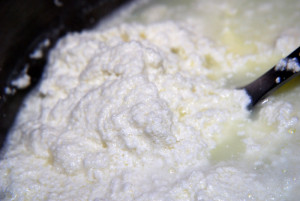
As the milk temperature increases, the curd mass becomes thicker as the milk solids separate from the whey
Once the milk has reached its target temperature, remove the pan from the heat, and loosen the curds from the edge of the pan with a spatula, then cover the pan, and allow the curds to rest for 10 minutes, undisturbed.
Line a strainer with damp butter muslin, and place over a large bowl for draining the whey. Any non-reactive strainer will work. For working with larger batches, I use a 1/2 hotel pan with a steamer insert, which I use as a draining box for other types of cheese too.
Using a slotted spoon, carefully ladle the curds into the muslin-lined strainer.
Sprinkle the remaining 1 tsp of Kosher salt over the curds, and gently toss. Avoid breaking up the curds as much as possible.
You can bring the corners of the muslin together and hang the curds to facilitate draining, but do not squeeze the whey from the curds.
Allow the curds to drain for 15-30 minutes. The longer the curds drain, the drier the Ricotta curds will become, so for a creamier texture, use a shorter draining time.
Note, you can use cheese molds to drain the curds if you wish, but some of the smaller curds may be lost through the holes in the molds. For Ricotta, as it has a fine curd texture, and a short draining time, I prefer to use butter muslin for draining the curds.
Once the curds are drained, the cheese is ready. That’s it! The majority of the ricotta from this batch was destined to be turned into a lot of our favorite butternut squash ravioli.
What About the Whey?
When making cheese you’re separating the milk solids from the liquid component, and this results in left-over whey. Sometimes quite a lot of it! Although some commercial dairy operations struggle with disposal of excess whey[1], with home cheesemaking, it’s not difficult to find a myriad of uses for it.
Whey can be used to replace some, or all, of the water used in making bread, or pizza dough. The whey brings a sweetness to the dough, and results in a much more tender crumb. The whey from this batch of ricotta was used to make these sourdough loaves last night, where I substituted all of the water for whey.
The whey can also be used for cooking rice, or pasta, added to the compost pile, even fed to the chickens (they love it!), so there’s no reason to throw any of the whey…away!
———————————-
[1] Charles, Dan. The Salt. Why Greek Yogurt Makers Want Whey To Go Away. National Public Radio (NPR). November 21, 2012
Cheese-making Books:
Fox, Patrick F., Timothy P. Guinee, Timothy M. Cogan, and Paul L. H. McSweeney. February 2000.Fundamentals of Cheese Science. Aspen Publishers Inc., MD.
Hurst, Janet. March 2011. Homemade Cheese: Recipes for 50 Cheeses from Artisan Cheesemakers. Voyageur Press, MN.
Karlin, Mary. August 2011. Artisan Cheese Making at Home: Techniques & Recipes for Mastering World-Class Cheeses. Ten Speed Press, CA.
Kindsedt, Paul. May 2005. American Farmstead Cheese: The Complete Guide to Making and Selling Artisan Cheeses. Chelsea Green Publishing Company, VT.
Le Jaouen, Jean-Claude. 1987. The Fabrication of Farmstead Goat Cheese. Cheesemaker’s Journal, MA.
Cheese-making Cultures and Supplies:
The Beverage People, Santa Rosa, CA.
New England Cheesemaking Supply, South Deerfield, MA.
Dairy Connection, Inc., Madison, WI.
Glengarry Cheesemaking and Dairy Supply, Ltd. , Ontario, Canada

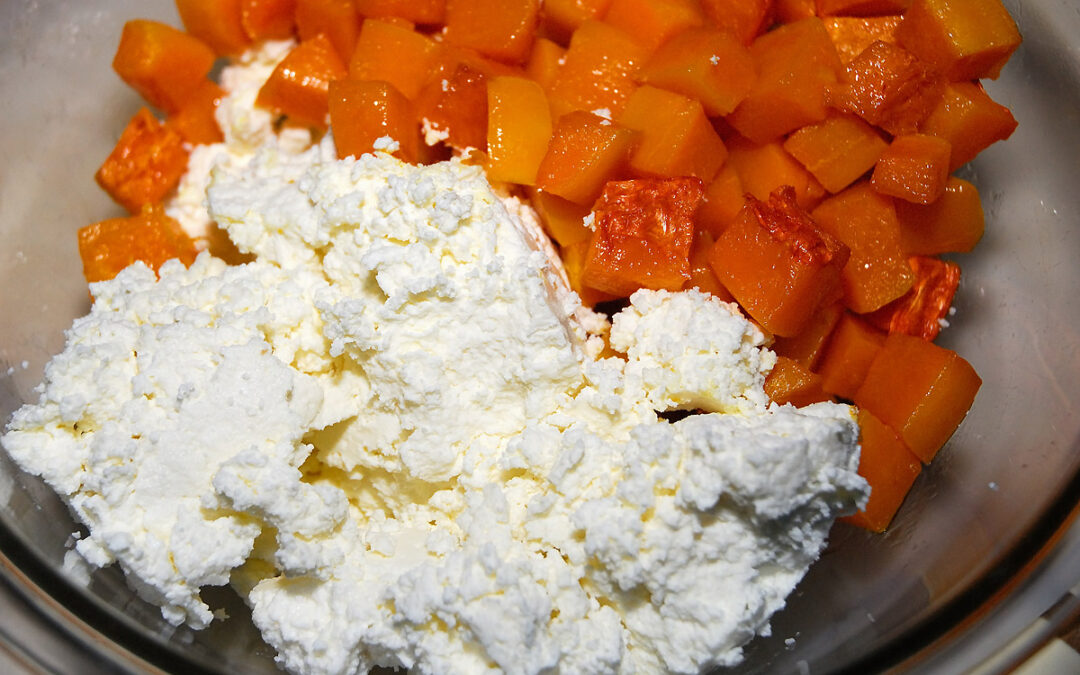

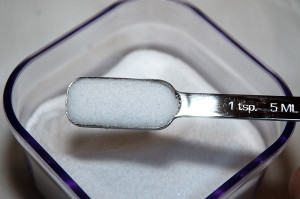
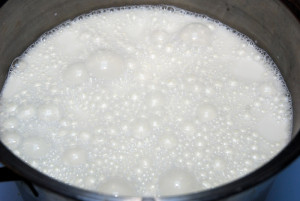
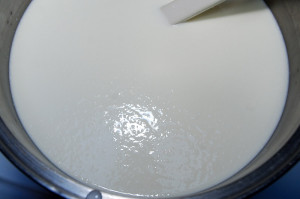
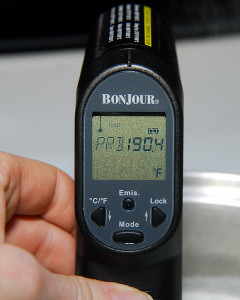
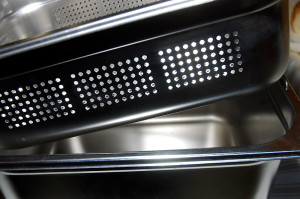
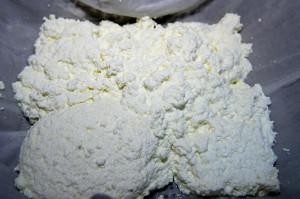
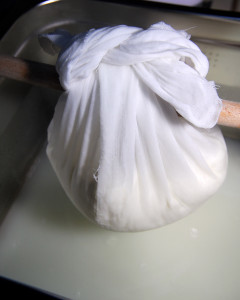
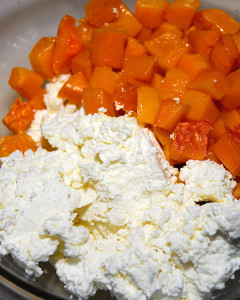
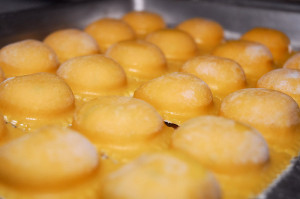
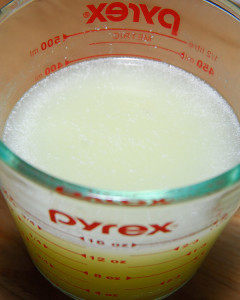
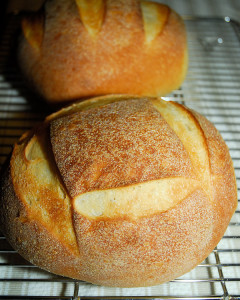







Wow you use everything…this is my favorite cheese as I am Italian and we used it in so much!! Here’s to another yummy year!!
I’m definitely hoping for a yummy year, and looking forward to more ricotta too! I’m plotting and scheming to make a salted Ricotta (Ricotta salata), or maybe even a cultured Ricotta, soon!
Excellent post! You make it seem so easy to make ricotta cheese. Thanks for the instructions. Best wishes for a productive, healthy, and happy New Year!
A basic, fresh, Ricotta is ridiculously simple to make, and because Ricotta never tastes better than right after it’s drained, it is impossible to get the same character of flavor from the grocery aisle! If you use it at all, it’s definitely worth making your own 🙂
I want to come for dinner sometime. You are an amazing cook. I love to cook everything from scratch, but never made my own cheese. You made it look easy, but I am guessing it takes real practice. I like how you use everything too. Very thrifty, but also a great practice.
Donna, if you find yourself out this way, you’re welcome to come to dinner. Making this style of Ricotta really takes no practice. I bet you could craft a perfect Ricotta on your first try. I also think (except for hot stove part) that even children would get a kick out of transforming a simple gallon of milk into a fresh, tasty cheese. It really is that easy! I also do love that there’s no waste, and that the whey actually improves the texture of bread!
You amaze me! I am always impressed with how you make everything from scratch! I aspire to do so. I love cheese and bread and yours looks absolutely scrumptious! Happy New Year Claire, may your garden be fruitful and bring you much joy!
Happy New Year, Karin! I hope all of our gardens are fruitful this year 🙂
Got a cheese making kit for Christmas, cant wait to try it out, that with the gift certificate to the local brewing supply house, awesome christmas gifts!!!! Makin’ cheese makin beer!!! cant wait!
Awesome, Tom! Cheese, and beer, go great together! Careful though, cheesemaking gets addictive…next thing you know, you’ll be converting a wine fridge into a cheese cellar
This is so interesting to me. I love cheese, have taken cheese tasting/pairing classes, but have never made it. You make it look easy, and I admire how self-sufficient you are. Best wishes for the New Year!
Well, so far I’ve cheated, and only posted the easy cheeses 😉 I am planning to venture into some more complex cheesemaking this year though, and trying to figure out if I can fit some classes into my schedule this year too! Happy New Year!
Last year I *almost* made my own cheese. I bought a book. I told my husband I was going to do it. But in the end, I chickened out! I really should give it a go. You do make it look easy. Thanks, too, for mentioning the whey and all the different ideas of how to make it go away! 🙂
Awww, don’t chicken out! This would be a perfect ‘first cheese’ to start with, as there’s no culture, and no ripening involved. In fact, it tastes the best the day you make it, although I had some for lunch today on sourdough, and it was still scrumptious. I think you’ll have fun, and once you taste it, you’ll wish you made it sooner! 😀
That’s interesting how you use the whey. My mother used to do the same with leftover water from boiling potatoes. It added a certain something to the buns and bread.
I’ve heard of using the starchy potato water to make bread. I don’t know why I’ve never done that. Would be interesting to try, although knowing my penchant for potatoes, I’d probably put those in the bread too…with a little rosemary…maybe some garlic. Uh oh…I feel a bread baking session coming on! 😆
Yum! Time to make lasagna…or better yet, Cannoli! Now I’m really hungry!
**looks down at her waistline after the holiday baking** 😳 Cannoli! That would be a perfect use for this ricotta! The cheese is already a little sweet, and has a lovely texture. Definitely going to have try making some next time I make ricotta. Great suggestion!
Very interesting. It got me thinking about making Quark, a cheese that’s similar in texture to ricotta but with a more tangy flavor. It appears there are starters for that–maybe I’ll just have to try. It’s quite delicious.
Quark is also very easy to make, and you’re right, it’s quite similar in texture. I’ve even seen some cheesecake recipes that specifically call for it. It’s usually made from soured milk, and a mesophilic Lactococcus culture. It’s actually quite similar to paneer, and usually has no added salt, which is great for those watching their sodium intake a little more closely.
Clare, You continue to amaze me! The ricotta looks yummy. Happy New Year! P. x